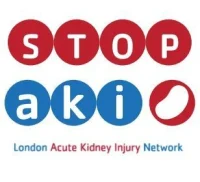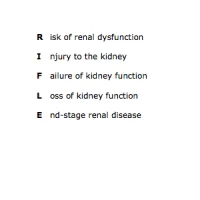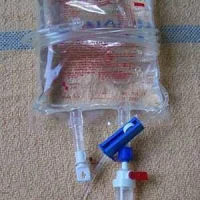Use of a buffered crystalloid for fluid therapy, compared with saline, did not reduce the incidence of acute kidney injury or failure for intensive care unit (ICU) patients, according to new research presented at the 28th annual congress of the European Society of Intensive Care Medicine. The findings are also published in JAMA.
Although 0.9 percent sodium chloride (saline) is the most commonly used resuscitation fluid in critically ill patients, there is growing concern that the high chloride content may contribute to the development of acute kidney injury (AKI). Observational data suggest that buffered crystalloids may be associated with a decreased risk of AKI and of death compared with saline.
For this study, Paul Young, FCICM, of the Medical Research Institute of New Zealand, Wellington, and colleagues assessed 2,278 patients who were receiving treatment in four ICUs in New Zealand and requiring crystalloid fluid therapy. Of these patients, 1,152 of 1,162 patients (99 percent) receiving buffered crystalloid and 1,110 of 1,116 patients (99.5 percent) receiving saline were analysed. The researchers found that:
“Further large randomised clinical trials are needed to assess efficacy in higher-risk populations and to measure clinical outcomes such as mortality,” the research team notes.
John A. Kellum, MD, of the University of Pittsburgh, and Andrew D. Shaw, MB, FRCA, of the Vanderbilt University School of Medicine, Nashville, have released a commentary on Dr. Young's findings.
“The results provide reassurance that neither 0.9 percent saline nor a low-chloride electrolyte solution appears to be particularly hazardous when the total dose used in patients at low to moderate risk is about 2L. This is an important contribution to the care of patients in the ICU. However, the large body of ‘circumstantial’ evidence that points to a harm signal for saline — with scant, if any, evidence of comparative benefit — should behove intensivists and other clinicians to proceed with caution when ordering intravenous fluids.”
Source: JAMA
Image credit: Wikimedia Commons
Although 0.9 percent sodium chloride (saline) is the most commonly used resuscitation fluid in critically ill patients, there is growing concern that the high chloride content may contribute to the development of acute kidney injury (AKI). Observational data suggest that buffered crystalloids may be associated with a decreased risk of AKI and of death compared with saline.
For this study, Paul Young, FCICM, of the Medical Research Institute of New Zealand, Wellington, and colleagues assessed 2,278 patients who were receiving treatment in four ICUs in New Zealand and requiring crystalloid fluid therapy. Of these patients, 1,152 of 1,162 patients (99 percent) receiving buffered crystalloid and 1,110 of 1,116 patients (99.5 percent) receiving saline were analysed. The researchers found that:
- 102 of 1,067 patients (9.6 percent) developed AKI within 90 days after enrolment in the buffered crystalloid group (vs. 94 of 1,025 patients [9.2 percent] in the saline group).
- Renal replacement therapy (dialysis) was used in 38 of 1,152 patients (3.3 percent) in the buffered crystalloid group (vs. 38 of 1,110 patients [3.4 percent] in the saline group).
- Overall, 7.6 percent of patients in the buffered crystalloid group and 8.6 percent of patients in the saline group died in the hospital.
“Further large randomised clinical trials are needed to assess efficacy in higher-risk populations and to measure clinical outcomes such as mortality,” the research team notes.
John A. Kellum, MD, of the University of Pittsburgh, and Andrew D. Shaw, MB, FRCA, of the Vanderbilt University School of Medicine, Nashville, have released a commentary on Dr. Young's findings.
“The results provide reassurance that neither 0.9 percent saline nor a low-chloride electrolyte solution appears to be particularly hazardous when the total dose used in patients at low to moderate risk is about 2L. This is an important contribution to the care of patients in the ICU. However, the large body of ‘circumstantial’ evidence that points to a harm signal for saline — with scant, if any, evidence of comparative benefit — should behove intensivists and other clinicians to proceed with caution when ordering intravenous fluids.”
Source: JAMA
Image credit: Wikimedia Commons
References:
Young P et al. (2015) Effect of a Buffered Crystalloid Solution vsSaline on Acute Kidney Injury Among Patients in the Intensive Care Unit:The SPLIT Randomized Clinical Trial. AMA. Published online October 07,
2015. doi: 10.1001/jama.2015.12334
Kellum JA, Shaw AD (2015) Assessing Toxicity of Intravenous Crystalloids in Critically Ill Patients. JAMA. Published online October 07, 2015. doi: 10.1001/jama.2015.12390
Kellum JA, Shaw AD (2015) Assessing Toxicity of Intravenous Crystalloids in Critically Ill Patients. JAMA. Published online October 07, 2015. doi: 10.1001/jama.2015.12390
Latest Articles
healthmanagement, European Society of Intensive Care Medicine, saline, fluids, AKI, dialysis, kidney failure
Use of a buffered crystalloid for fluid therapy, compared with saline, did not reduce the incidence of acute kidney injury or failure for intensive care unit patients, according to new research presented at the 28th annual congress of the European Socie










